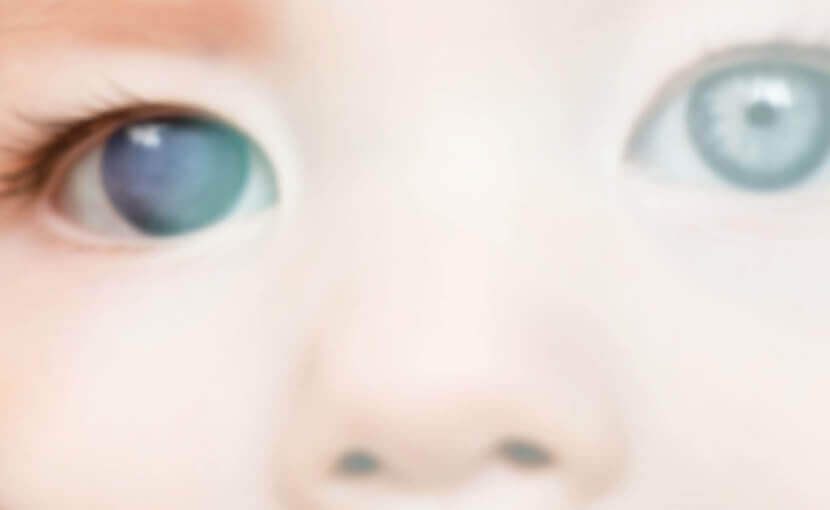
Amblyopia:
"Lazy eye", or amblyopia, is caused by low vision in one or both eyes due to lack of use during a child’s visual development (approx. before the age of eight). It is a disorder that originates in childhood, but can continue into adulthood, if it is not diagnosed and treated early.
Congenital Cataracts:
A congenital cataract is a clouding of the crystalline lens of the eye that is present at birth, preventing the child from seeing. Cataracts can impair vision, if they are large and completely cover the pupil (the central area of the eye, through which light enters). They can be unilateral or bilateral and can be accompanied by other ocular abnormalities (corneal and retinal disorders) and are often hereditary. They can also be caused by Intrauterine Infections, Chromosomal Syndromes, Metabolic Disorders and Renal Diseases.
Refractive Errors in Children:
Refractive, or optical, errors – myopia, hyperopia and astigmatism – cause blurred vision due to an inability to focus images on the retina. If not corrected, their consequences can be particularly harmful for children, since vision is developed in the first years of life. Any cause of poor vision in one or both eyes during childhood, as is the case with refractive errors, can lead to the condition known as "lazy eye". When the child has hyperopia, astigmatism or myopia, the image that reaches the brain is not sharp. The dioptric power of the eye is determined by two main factors:
The Cornea and Crystalline Lens: they provide the eye with its convergence ability, since it is through the cornea and lens that light passes and converges to focus the image on the retina.
The Axial Length: the distance between the anterior and posterior poles of the eyeball, which governs the need for greater or lesser convergence of light, depending on whether the eyeball is longer (myopic) or shorter (hyperopic).
Children's Strabismus:
Strabismus can be caused by various factors. In ophthalmological terms. Among several ophthalmological factors, the most frequent are:
The possible association with a refractive error, e.g. myopia.
There are other causes that are less common, but severe and the ophthalmologist should exclude. Since ocular alignment is controlled by the brain, any disorder affecting the central nervous system can lead to strabismus: a severe fever, an illness or even stress suffered by children as a result of changing schools or parental separation, etc.
Therefore, it is common for strabismus to manifest itself, after one of these situations.
Ptosis Palpebral Infantil:
Eyelid ptosis is the drooping of the upper eyelid over the eye to varying degrees of severity. When it occurs before the age of eight, it is known as childhood eyelid ptosis. As the child is in a period of visual development and growth, one of the specific consequences of not being able to open the eye normally can be the onset of amblyopia, or "lazy eye". The affected eye does not receive adequate visual stimuli and does not develop to its full potential.
Congenital Cataract Surgery:
It is an operation to remove the opaque content of the crystalline lens in infants and children with congenital cataract. When the cataract starts to affect the child’s visual development, it must be operated on as soon as possible. If visual development is only being slightly affected, it needs to be monitored regularly by an ophthalmologist, who specialises in treating cataracts in children (since they are different to adult cataracts and have very different consequences).
Paediatric cataract surgery is not without complications and risks, so it is preferable to wait if visual development is good in spite of the cataract. When the cataract is large and detrimental to vision, however, surgery should be performed as soon as possible. For bilateral congenital cataracts, the most appropriate time for treatment is during the first 10-12 weeks of life and, for unilateral cataracts, during the first 6 weeks. It is within these timeframes that the best results can be achieved in terms of a good prognosis for the recovery of vision.
Strabismus Surgery in Children:
Strabismus surgery in children is the treatment to correct this eyesight problem that consists of the loss of parallelism between both eyes insofar as they are not properly aligned and each one points in a different direction. Eye surgery is only necessary if eye deviation persists after the optical defects and amblyopia have been corrected.



